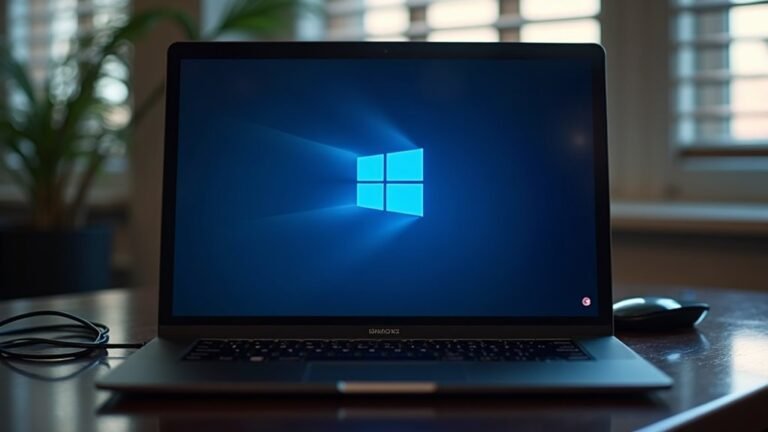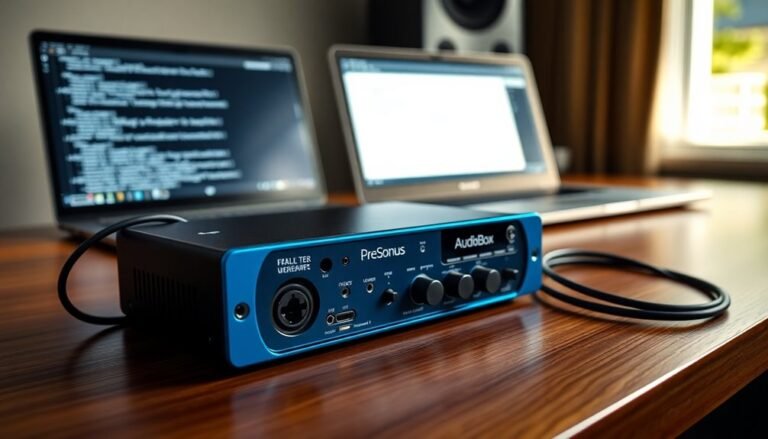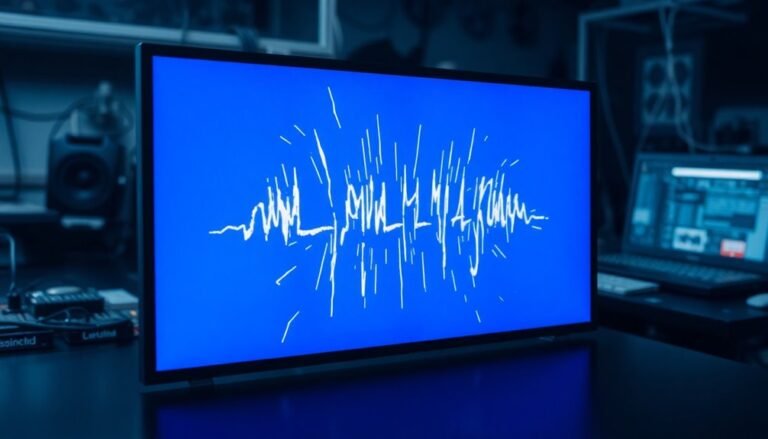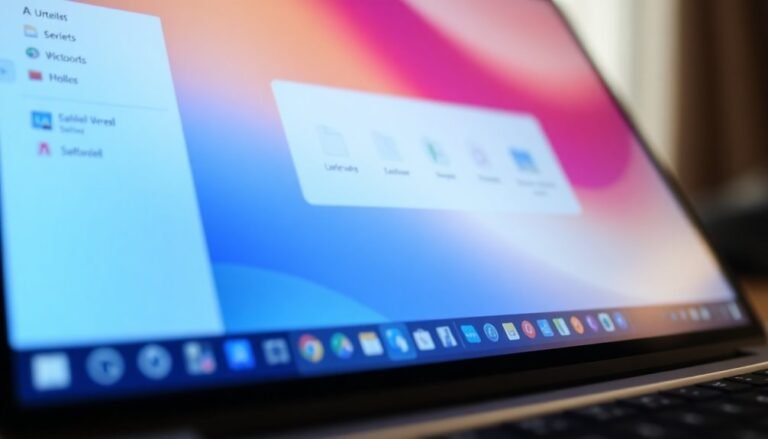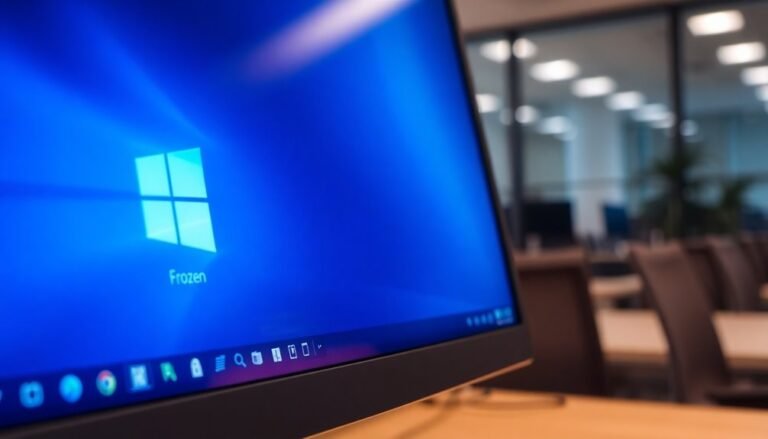Windows Error 7034: Fix Service Control Manager Error

To fix Windows Error 7034 from the Service Control Manager, start by checking Event Viewer to identify which service failed.
Open Services (services.msc) and adjust the affected service’s startup and recovery settings. Make sure it is set to automatically restart if it fails.
Update or reinstall related software or drivers. Address any resource or network issues found in Event Viewer logs.
Optimizing system resources and tightening service dependencies can help prevent future errors. More targeted solutions are outlined below.
Understanding Windows Error 7034 and the Service Control Manager
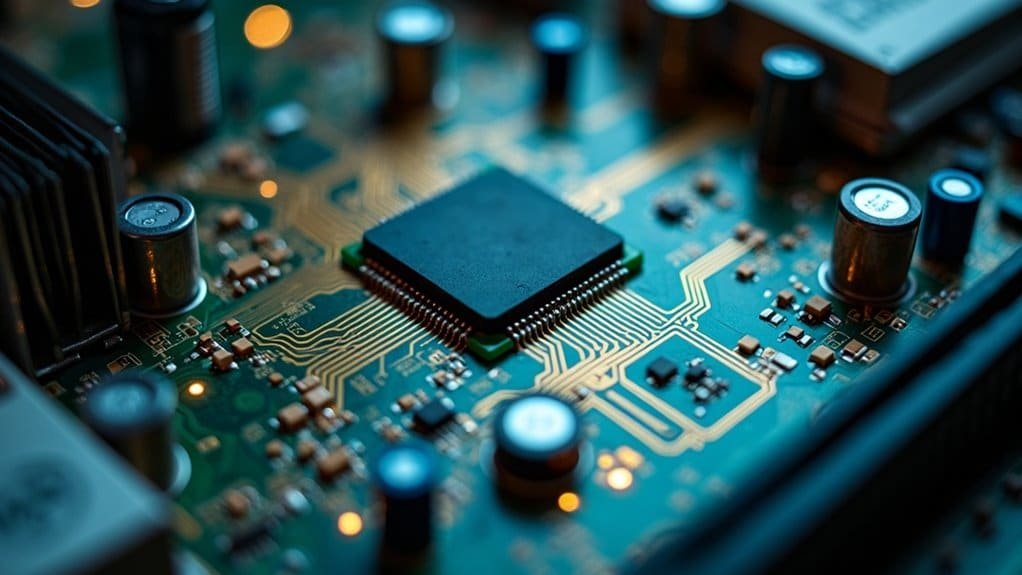
Understanding Windows Error 7034: Causes and Solutions for Service Control Manager Issues
Windows Error 7034 occurs when a service unexpectedly terminates under the control of the Service Control Manager (SCM). The SCM is a vital Windows system component responsible for managing all background services, including critical functions like networking, security, and device management.
Running as the services.exe process, the SCM initializes during system startup by reading configuration data from the Windows registry to load, order, and manage services based on their dependencies. The database of installed services maintained by the SCM ensures that configuration details are always available for efficient and reliable service management. Users can interact with the Service Control Manager directly or through administrative tools such as Services.msc or sc.exe, which communicate securely via the SCM API.
Additionally, the SCM functions as a Remote Procedure Call (RPC) server, enabling remote service management across networked computers with strict access permissions. By maintaining a comprehensive database of all services and their current status, the SCM ensures services start in the correct sequence to maintain system stability and performance.
When Error 7034 appears, it signals a disruption in this carefully managed service operation, often caused by software conflicts, corrupted service files, or system issues.
Troubleshooting Error 7034 involves checking event logs, verifying service dependencies, and ensuring system files are intact. Understanding the role of the Service Control Manager and addressing Error 7034 promptly helps maintain a smooth and reliable Windows experience.
Common Causes Behind Event ID 7034
Event ID 7034 is a common Windows error that indicates a service has unexpectedly stopped. Understanding the common causes behind Event ID 7034 can help you quickly diagnose and resolve service interruptions on your Windows system.
Here are the top reasons why Event ID 7034 occurs:
- Corrupt or Missing System Files: Damaged or missing files related to Windows services can cause unexpected service termination.
- Service Conflicts and Dependency Failures: When services compete for the same resources or dependencies are misconfigured, services may stop abruptly.
- Software Bugs and Outdated Drivers: Running outdated drivers, system updates, or management tools can lead to software bugs that cause service crashes.
- Resource Constraints: High CPU, memory usage, or insufficient system resources can starve essential services, forcing Windows to terminate them. OneDrive and OneSyncSvc_Session, for example, are known to trigger Event ID 7034 during shutdown if they cannot close within the expected time frame.
- Improper or Forced Service Shutdowns: Services forcibly stopped during system restarts or due to incorrect recovery settings may trigger Event ID 7034.
By identifying these common causes of Event ID 7034, you can take proactive steps to prevent unexpected service failures and maintain system stability.
Regular system updates, driver maintenance, and proper service configuration are key to avoiding this error.
Optimize your Windows system health by addressing these frequent triggers of Event ID 7034 and ensure smooth service operations.
Identifying Affected Services and Analyzing Event Viewer Logs
How to Troubleshoot Event ID 7034: Identify Affected Windows Services and Analyze Event Viewer Logs
To troubleshoot Event ID 7034 effectively, start by identifying which Windows service stopped unexpectedly. Open Event Viewer, go to the “System” log, and filter by Event ID 7034 to find relevant entries. Each log entry clearly shows the affected service name, the exact timestamp, and a message confirming the unexpected termination of the service.
Pay close attention to whether the service is a core Windows component or a third-party application such as Connect:Direct or Dell Digital Delivery Service. This distinction helps prioritize your troubleshooting steps.
Next, analyze the surrounding context by reviewing related Event Viewer logs like Event ID 7031 or 7000. These can reveal preceding errors or dependency failures that might’ve caused the service to terminate. Look for recurring Event ID 7034 errors for the same service, as frequent crashes often indicate deeper stability issues.
To gain further insights, check the service dependencies by opening the Services console (services.msc) or running the command “sc qc servicename” in Command Prompt. Understanding service dependencies helps determine if failures are isolated or part of a cascading problem.
Adjusting Service Startup and Recovery Settings

How to Adjust Service Startup and Recovery Settings to Fix Windows Error 7034
To resolve Windows Error 7034 and improve system stability, it’s essential to adjust the affected service’s startup and recovery settings. Start by opening the Services MMC snap-in: press Windows + R, type services.msc, and hit Enter. Locate the problematic service, right-click it, and select Properties.
Set the Service Startup Type
In the General tab, choose the optimal Startup type based on your system needs:
- Automatic: Starts the service at boot for essential services.
- Automatic (Delayed Start): Delays service startup to improve boot performance.
- Manual: Starts the service only when needed.
- Disabled: Prevents the service from running.
Selecting the right startup type helps balance system performance and service reliability.
Configure Service Recovery Options
Next, go to the Recovery tab to configure how Windows responds to service failures:
- Set up First, Second, and Subsequent failure actions, such as restarting the service, restarting the computer, or running a custom program.
- Adjust the Restart service after delay to give the system time to recover.
- Define the Reset fail count after period to prevent continuous restarts.
Proper recovery settings ensure quick service restoration and reduce downtime.
Additional Tips for Managing Services
- Use Event Viewer to monitor service failure logs and identify recurring issues related to Error 7034.
- Implement Group Policy for centralized service configuration across multiple devices in a network environment.
- Regularly review service dependencies to avoid conflicts and cascading failures.
By carefully adjusting service startup and recovery settings, you can minimize the occurrence of Windows Error 7034, enhance system reliability, and maintain optimal performance.
For more detailed troubleshooting and optimization tips on Windows services and error 7034, explore our comprehensive guides and expert resources.
Resolving Service Crashes Through Software and Driver Reinstallation
How to Fix Windows Error 7034 by Reinstalling Software and Device Drivers
Windows Error 7034 often occurs due to repeated service crashes caused by corrupted software or faulty device drivers. To resolve this issue and improve system stability, follow these proven steps.
First, uninstall any corrupted or malfunctioning programs via the Control Panel. Removing problematic software prevents service conflicts and corruption cascades. After uninstalling, reinstall the latest clean version of the software from official sources. Keeping your applications updated ensures compatibility and reduces the risk of service failures triggering Error 7034.
Next, update your device drivers, focusing on critical components like the Intel Management Engine Interface. Outdated or faulty drivers are a common cause of Event 7034 errors. Identify the driver related to the crashes, uninstall it completely, then download and install the latest official driver from the manufacturer’s website. This step ensures essential system files such as DeviceDriverRetrievalClient.dll remain intact and fully compatible with your Windows OS.
If Windows system files or essential frameworks are missing or corrupted, reinstall the associated Microsoft software or service packages. This restores all necessary dependencies and replaces damaged files, effectively eliminating frequent service termination events without the need for manual file edits.
By following these steps to reinstall software and update drivers, you can effectively fix Windows Error 7034 and maintain a stable, error-free system.
For more troubleshooting tips and official downloads, visit Microsoft’s support site and your device manufacturer’s driver download page.
Addressing Resource Constraints and System Performance Issues
How to Fix Windows Error 7034: Addressing Resource Constraints and Boosting System Performance
Windows Error 7034 often occurs due to service crashes caused by deeper system resource constraints and performance issues. While reinstalling software and updating drivers can resolve some instances, persistent errors usually require a thorough assessment of CPU usage, memory allocation, service concurrency, and overall system load to identify and eliminate bottlenecks.
Key Steps to Prevent Windows Error 7034:
- Monitor CPU Utilization: Ensure CPU usage stays below 60% during peak times to prevent overload. Reserve extra capacity for the operating system and monitoring tools to maintain smooth performance.
- Optimize Memory Usage: Evaluate available RAM and adjust heap size settings for your services. Modify registry values as needed and consolidate low-use services into shared instances to reduce memory overhead.
- Manage Service Instances: Limit the number of concurrent service instances to avoid excessive resource consumption. Using shared service instances can significantly improve stability.
- Use Performance Monitoring Tools: Implement proactive monitoring with tools that track CPU, memory, and service health metrics. Set early warning thresholds to detect resource saturation before it leads to service crashes.
- Configure Virtualized Environments: In virtual machines or containers, set explicit CPU and memory limits to prevent resource contention and ensure reliable service operation.
By following these best practices, you can effectively troubleshoot and fix Windows Error 7034, improve system stability, and enhance overall performance.
Regular monitoring and resource management are essential to prevent recurring service crashes and maintain a healthy Windows environment.
Optimize your Windows system today to eliminate Error 7034 and keep your services running smoothly.
Fixing Network-Related Service Errors
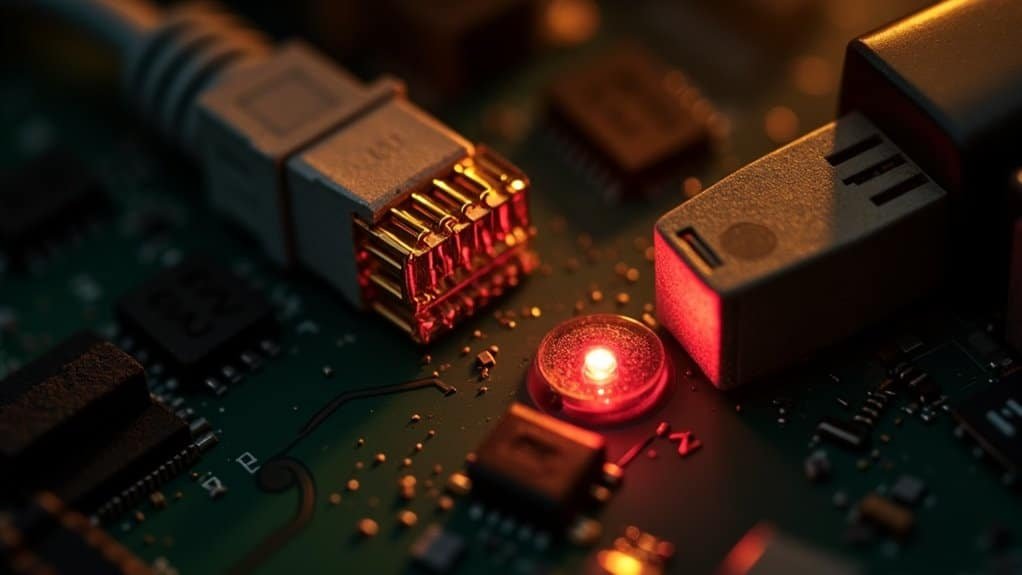
How to Fix Network-Related Service Errors and Windows Error 7034 on Windows
Network-related service errors can cause system instability and trigger Windows Error 7034, impacting your computer’s performance. To resolve these issues effectively, start by checking the Event Viewer for critical event IDs like 7034, 7023, and 7031. These logs help identify which service or dependency failed, allowing targeted troubleshooting.
Next, ensure all dependent network services are running properly. Essential services such as NetTcpActivator and DHCP Client may stop if required components are missing or disabled. Use Device Manager to detect any faulty or disconnected network hardware and confirm that all network cables are securely connected to avoid physical connectivity problems.
Third-party networking software, including firewalls and antivirus programs, can block service startup. To isolate these conflicts, boot Windows in Safe Mode or perform a clean boot. This helps identify if external software is causing network service failures.
Optimize service recovery settings by configuring failed network services to restart automatically. For critical services, consider enabling delayed start to give dependent components time to initialize fully.
Keeping your network drivers and firmware updated is crucial to prevent compatibility issues and improve system reliability.
Finally, verify that network services are running with the correct credentials and permissions to avoid logon session or authentication errors. By following these steps, you can fix network-related service errors and prevent Windows Error 7034, ensuring smoother network performance and system stability.
Keywords: fix network-related service errors, Windows Error 7034, troubleshoot network services, Event Viewer logs, NetTcpActivator, DHCP Client, device manager network hardware, clean boot network issues, update network drivers, service recovery options, network service permissions
Service-Specific Solutions for Frequent 7034 Errors
Effective Solutions for Frequent Windows Error 7034 on Common Services
Windows Error 7034 can disrupt multiple essential services, but fixing frequent occurrences requires service-specific troubleshooting. Addressing the root cause of each instance is key to restoring your system’s stability and optimal performance.
Below are proven steps to resolve Error 7034 for some of the most commonly affected Windows services:
- Dell Digital Delivery Service Error 7034: Fix this issue by uninstalling Dell Digital Delivery via Control Panel, then downloading and installing the latest version to replace any corrupted or missing files.
- Intel Local Management Service (LMS) Error 7034: Resolve by updating or reinstalling Intel Management Engine Interface (MEI) drivers. Also, verify and repair LMS service files in the installation folder to ensure integrity.
- Windows Update Service Error 7034: Run the Windows Update Troubleshooter, clear the contents of the SoftwareDistribution folder, and execute the System File Checker (SFC) tool to repair damaged system files causing the error.
- Windows Management Instrumentation (WMI) Service Error 7034: Rebuild the WMI repository using the command `winmgmt /salvagerepository` in Command Prompt, and confirm that all related dependency services are running smoothly.
By applying targeted fixes tailored to each specific service, you can quickly and effectively eliminate Windows Error 7034 and maintain system reliability.
For ongoing protection, keep your system and drivers up to date and monitor service health regularly.
Implementing Preventative Measures and Best Practices
How to Prevent Windows Error 7034 and Ensure Reliable Service Performance
To effectively prevent Windows Error 7034 and maintain consistent service reliability, implement a comprehensive proactive strategy that includes regular configuration audits, controlled service deployment, robust monitoring, and enhanced security measures.
1. Conduct Regular Configuration Audits
Schedule periodic audits using powerful tools like Best Practices Analyzer and PowerShell scripts. These audits help compare installed Windows services against approved baselines, quickly identifying unauthorized or misconfigured services that could cause service failures.
2. Deploy Services Correctly
Always install and deploy Windows services using official installation commands and Service Control Manager (SCM) methods. Avoid manual registry edits to prevent configuration errors. Use documented APIs for installing or removing services to ensure system stability.
3. Maintain Detailed Documentation and Change Management
Keep thorough records of every service installation, update, or removal. Enforce strict change management policies to minimize unexpected errors and maintain a stable Windows service environment.
4. Monitor Service Health Proactively
Utilize Event Viewer and advanced external monitoring platforms to track service states continuously. Set up targeted alerts specifically for Windows SCM Error 7034 to enable rapid response and troubleshooting.
5. Harden Security for Windows Services
Apply least privilege principles by restricting permissions on service registry keys and executable file paths. Use dedicated service accounts with limited rights, audit Remote Procedure Call (RPC) interactions with the SCM, and integrate Windows Defender or third-party security tools for real-time detection of potential service tampering.
6. Verify Third-Party Service Compatibility and Control Network Access
Thoroughly vet all third-party services for compatibility with your Windows environment. Configure firewall rules to restrict unnecessary network communication by services, reducing security risks and improving overall system resilience.
By following these best practices to prevent Windows Error 7034, organizations can enhance service stability, improve system security, and ensure uninterrupted Windows service operations.
Implement this strategic approach today to maintain optimal Windows service health and avoid costly service interruptions.
The Importance of Monitoring and Timely Resolution
The Importance of Monitoring and Timely Resolution for Windows Error 7034
Preventing Windows Error 7034 is crucial, but ensuring continuous service reliability requires proactive monitoring and rapid incident resolution. Detecting service irregularities immediately is essential because Error 7034 often indicates underlying system or application issues.
By closely monitoring Windows service control events, you can identify failure patterns early and take proactive measures to prevent service disruptions.
Utilizing real-time alerting tools allows IT teams to respond swiftly to Error 7034 incidents, reducing downtime, minimizing business interruptions, and avoiding costly escalations.
Prompt resolution also prevents cascading failures affecting dependent services and ensures compliance with service level agreements (SLAs).
To effectively manage Windows Error 7034 and maintain optimal service health, implement these best practices:
- Real-time alerting systems specifically for Windows Error 7034 events
- Centralized dashboards that provide comprehensive visibility into service health
- Historical log analysis to identify trends and root causes of service failures
- Automated response policies designed to quickly address critical service disruptions
Frequently Asked Questions
Can Windows Error 7034 Indicate Potential Malware Infection?
Yes, you should consider malware as a possible cause when you see Error 7034, especially if it appears with other suspicious activity. Run a full malware scan and check affected service files for tampering or infection.
Does Error 7034 Affect System Boot or Startup Processes?
Imagine your desktop appears, but key features lag—Error 7034 doesn’t block booting, yet you’ll notice startup slowdowns or missing functions if essential services fail. Check Event Viewer, set recovery actions, and reinstall troubled services to restore performance.
How Can I Automate Alerting for Future Error 7034 Occurrences?
You can automate alerting by configuring PowerShell scripts or monitoring tools to detect Event ID 7034, then trigger notifications via email, Teams, or SMS using webhooks, APIs, or SMTP, ensuring IT teams receive real-time alerts.
Is It Safe to Disable a Service That Repeatedly Logs Error 7034?
You shouldn’t disable a repeatedly failing service without first confirming it’s non-essential. Investigate the cause, check dependencies, and review logs. Disabling critical services can cause system instability or security risks, so proceed only after thorough analysis and documentation.
Will Restoring Windows to an Earlier Point Resolve Persistent Error 7034 Issues?
Restoring Windows to an earlier point might resolve error 7034 if recent changes caused it, but it won’t fix persistent issues from malware, hardware faults, or deeply corrupted files. You’ll often need additional troubleshooting or repairs beyond System Restore.
Conclusion
Think of your Windows services like gears in a clock—if one slips, the whole system’s off. Event 7034 is a warning that shouldn’t be ignored. In one survey, 60% of IT pros found recurring service crashes stemmed from overlooked updates or misconfigured settings. By proactively monitoring, fine-tuning recovery options, and resolving root causes, you’ll keep your system running smoothly. Don’t wait for the ticking to stop—take action now to prevent bigger issues later.
